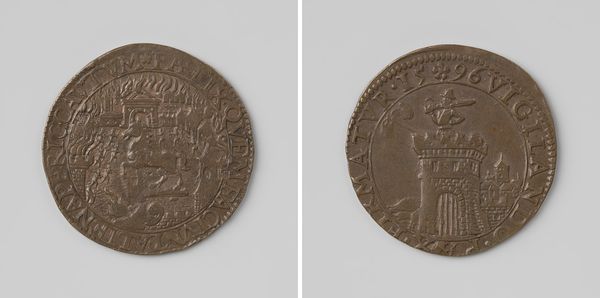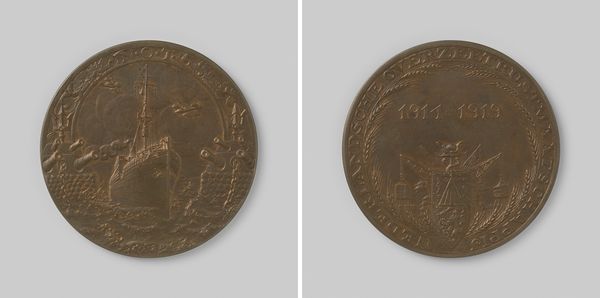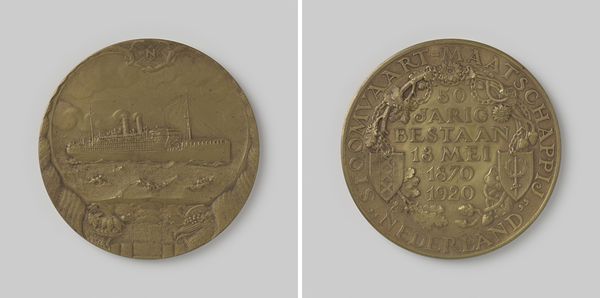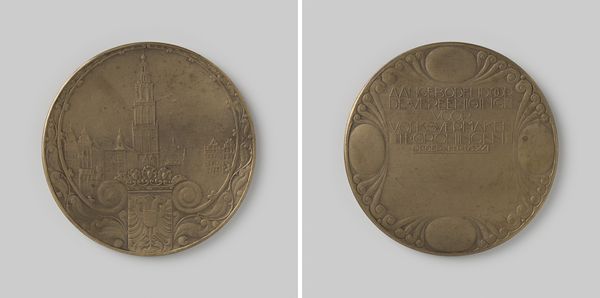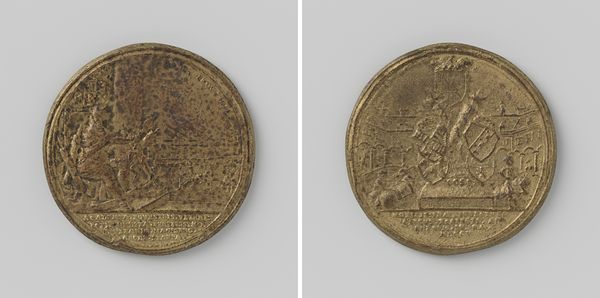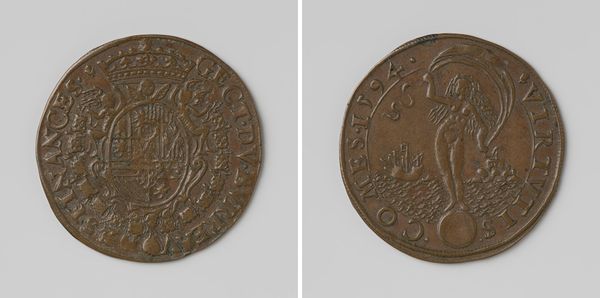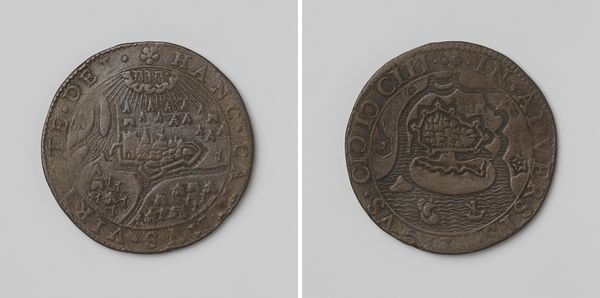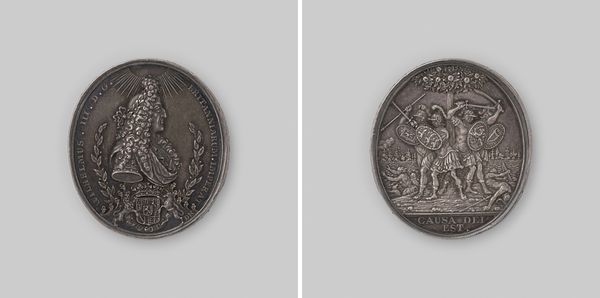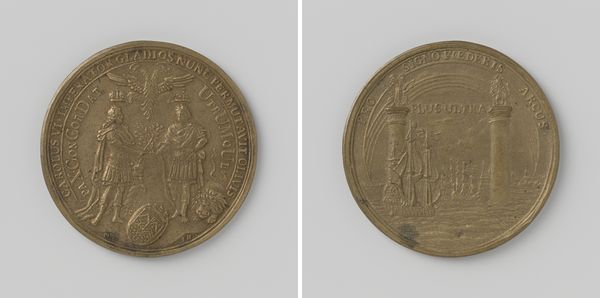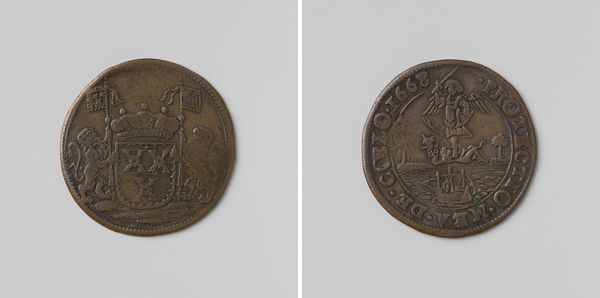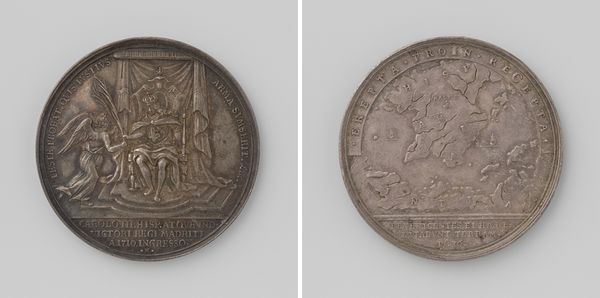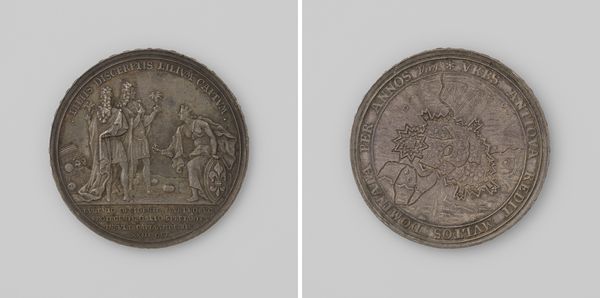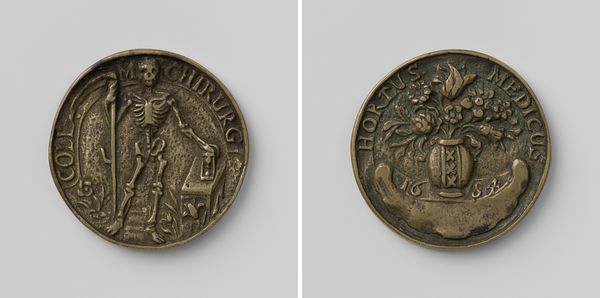
print, metal, relief, bronze, sculpture
#
portrait
#
medal
#
dutch-golden-age
# print
#
metal
#
sculpture
#
relief
#
bronze
#
figuration
#
geometric
#
sculpture
#
statue
Dimensions: diameter 7.5 cm, weight 148.60 gr
Copyright: Rijks Museum: Open Domain
Curator: This bronze medal, created by Johannes Cornelis Wienecke in 1914, commemorates the 75th anniversary of the Hollandsche IJzeren Spoorwegmaatschappij, or Dutch Railway Company. It's currently held in the Rijksmuseum. Editor: My initial impression is one of industrious strength. The figure at the center evokes a sense of labor and a subtle hint of classical heroism—even though it feels distinctly grounded in an industrial context. Curator: Indeed. Focusing on form, we observe the medal divided into distinct compositional zones. On one face, a muscular figure dominates the center, almost architectural in its stance. The reverse showcases an elaborate inscription within a bordered frame, all encased within a circular periphery filled with text. This strategic arrangement allows for a structured and legible reading of the medal's message. Editor: And speaking of message, the strongman powerfully symbolizes the railway’s vital role in holding up Dutch society. The "HIJSM" letters behind him obviously refer to the company, literally inscribed on the societal muscle of the Netherlands. What are those heraldic devices that frame his figure? Curator: Those are likely emblems of the cities served by the railway line, representative of connection and progress within the Dutch landscape. Look at how they encircle and support that central figure; the artist creates a powerful sense of integrated support, really underlining the themes of collaboration and industry. Note how he merges figurative relief with lettering and geometrical composition, forming a balanced, cohesive, commemorative artifact. Editor: It is really fascinating to see how, even on a relatively small object like this, symbols carry profound cultural weight. That figure, seemingly a classical titan, shifts to something entirely different once placed into this specific Dutch, industrial context, marking a sense of pride in national progress through something as tangible as a railway. A true statement of that era’s ambition! Curator: Agreed. The craftsmanship coupled with symbolic density showcases how commemorative art operates on both a formal and deeply communicative level. Editor: Yes. Studying how specific symbolic imagery operates across historical and cultural contexts can unveil how a society pictures its values, achievements, and aspirations.
Comments
No comments
Be the first to comment and join the conversation on the ultimate creative platform.
